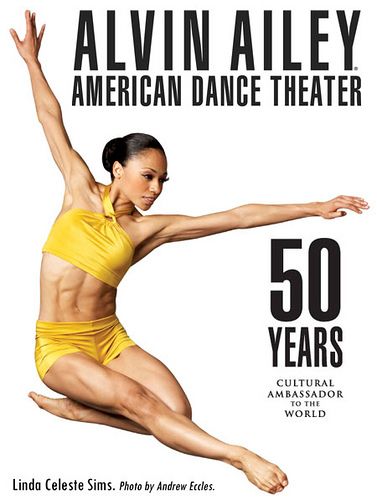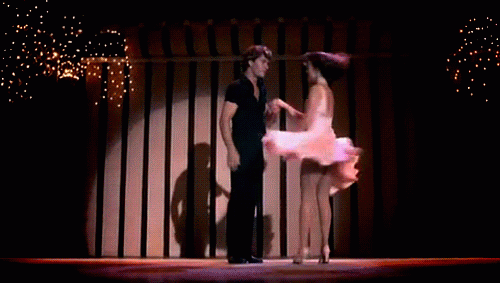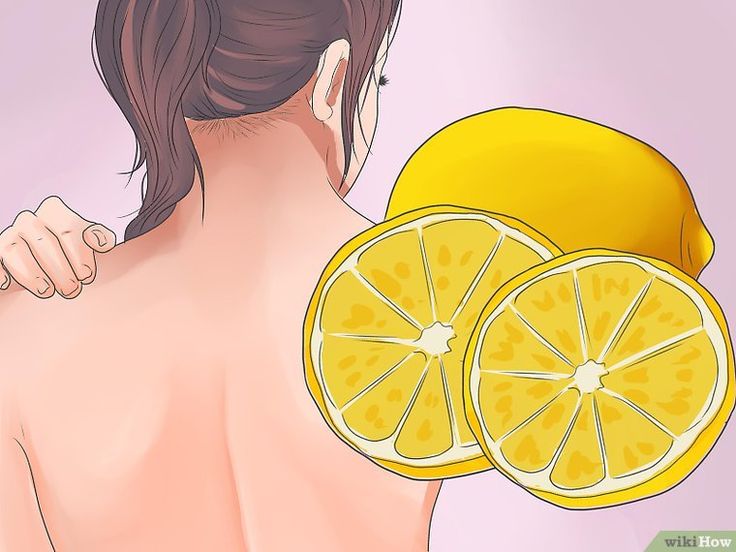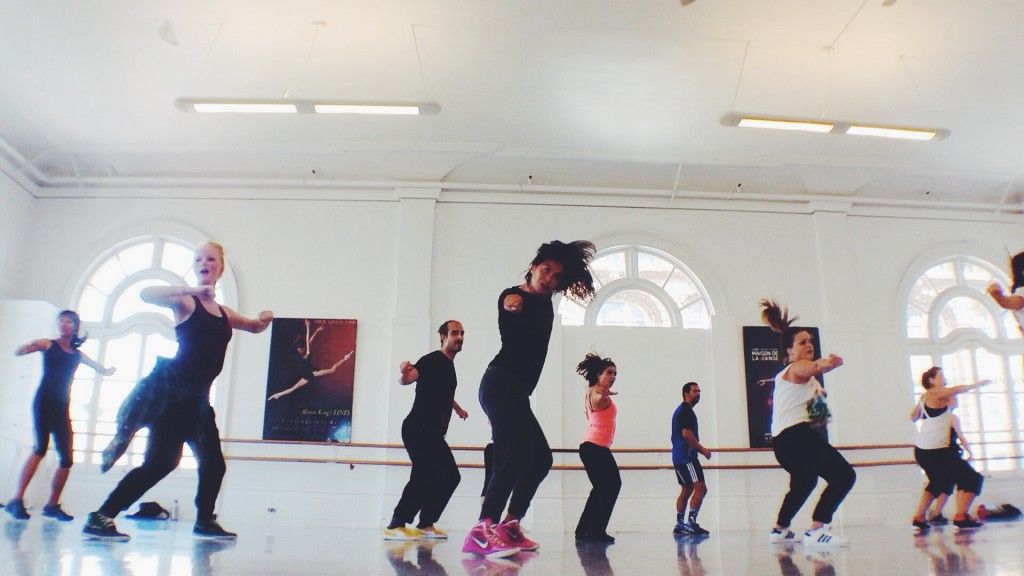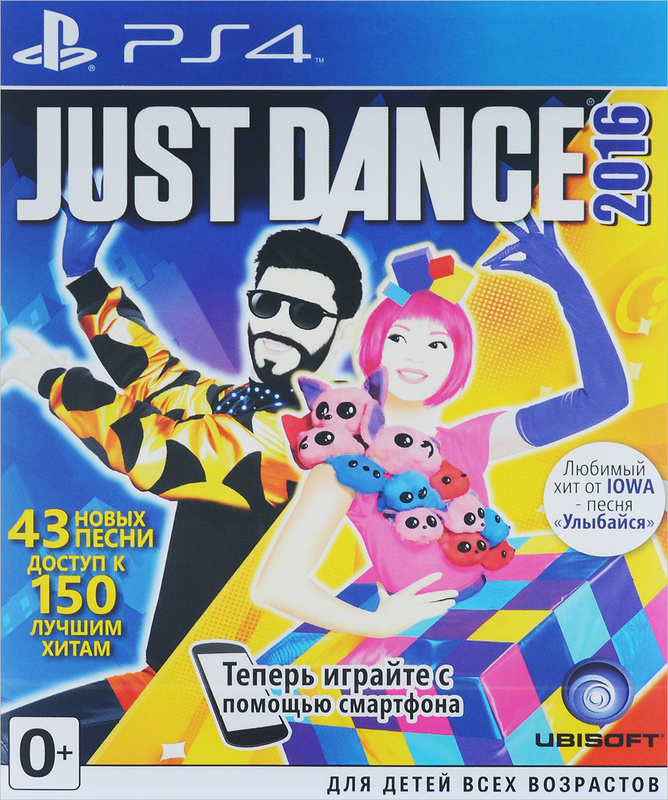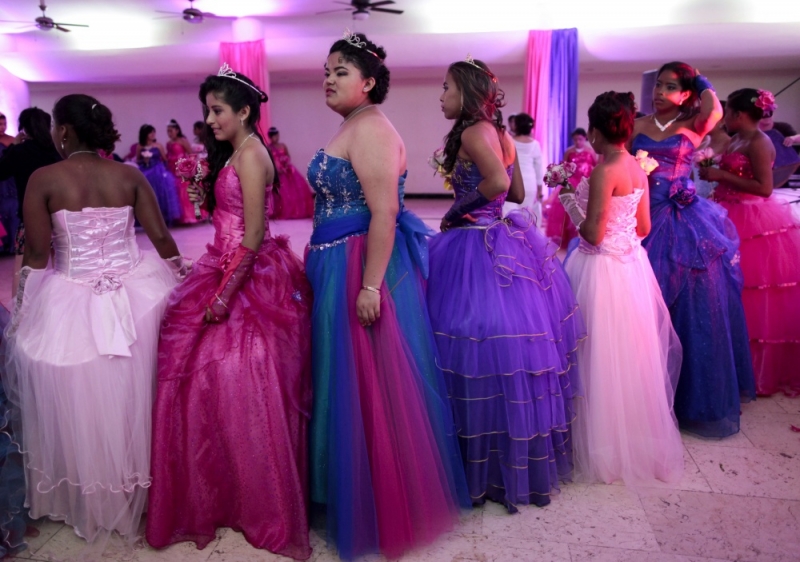How to dance the dabke
Dabke (L*), Debke – Lebanon, Palestine, Syria, Jordan – Revised and Expanded – Folkdance Footnotes
*a Living dance is a 1st Generation dance that is still performed in the country of origin (or immigrant communities) as part of a social event like a wedding where others can participate (not for an audience) by people who learned the dance informally (from friends and relatives by observation and imitation, not in a classroom situation). For more information, click here and here.
About Dabke
Dabke, Debke, is THE dance genre of the Levant – Syria, Lebanon, Jordan, Palestine, and parts of Israel, Iraq, Turkey, Yemen, and Saudi Arabia. I say dance genre because, although there is one basic step that is typical of the most popular type of dabke, there are many types of dabke, some of which have other basic steps. Furthermore, many Levantine people label any long-line, mixed gender, simple group dance a dabke, including dances by Assyrians, Kurds, Turks and others who do not have dabke in their tradition. Beware of YouTubes labeled Dabke!
Generally speaking, when Levantines speak of dabke, they mean a dance where everyone can participate, but where the line has 3 distinct parts.
- 1. The raas (“head”) or lawweeh (also spelled “lawih”) who leads the line; an accomplished dancer who inspires and directs the line, and may improvise sometimes spectacular steps, leaps, twists, and other acrobatic moves.
- 2. The next 2 or 3 people in line – trusted partners who can support the leader by anticipating and copying the leader’s moves, or physically support the leader when the leader leaps, drops, leans, etc.
- 3. Everybody else, who are there to witness and enjoy participating in a group event, and to dance a simple step, which may change occasionally at the leader’s direction.
 https://www.youtube.com/watch?v=HYxQMbsmPaw
https://www.youtube.com/watch?v=HYxQMbsmPawNote the basic dabke step has 6 counts or steps and moves to the right. Some folk dance scholars note a similarity between dabke and a more universal 6-count line dance – what I term the Taproot Dance. For more on this dance click https://folkdancefootnotes.org/begin/the-taproot-dance/. I don’t consider dabke a Taproot Dance because it lacks the “2 to the right, 1 to the left ” direction pattern and also lacks the “step, step, step,___ step___,” pattern of weight shifts – both are essential elements of Taproot. The essential element of dabke is a STAMP, and also, usually, many more steps with the left foot than the right. The ‘basic’ above, for instance is cross step left, right, cross step left, right, lift left, stamp left.
According to Lebanese historian Youssef Ibrahim Yazbec, the dabke descends from Phoenician dances thousands of years old. [6] The dabke jumps may have originated in ancient Canaanite fertility rituals related to agriculture, chasing off evil spirits and protecting young plants.[7]
[6] The dabke jumps may have originated in ancient Canaanite fertility rituals related to agriculture, chasing off evil spirits and protecting young plants.[7]
Here’s a Lebanese documentary, explaining what Dabke means to the people of the Levant.
The etymology of dabke is uncertain, but it is thought to be derived from the Levantine Arabic word dabaka (Arabic: دبكة) meaning “stamping of the feet”[3][4][5] or “to make a noise”.[6]
The legend of dabke‘s origin.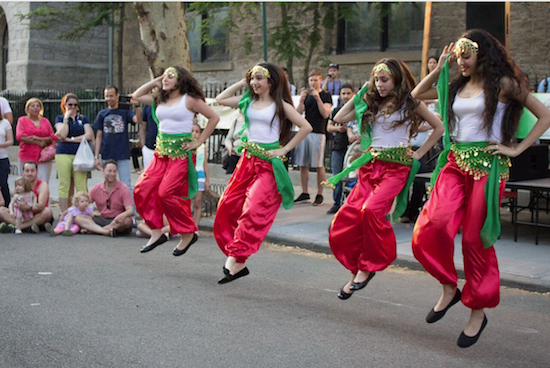 https://www.youtube.com/watch?v=CrTmWh8-fI0 This YouTube is an excerpt from a longer YouTube about the Syrian community of Argentina, found here: https://www.youtube.com/watch?v=syRa2Lsq1C4
https://www.youtube.com/watch?v=CrTmWh8-fI0 This YouTube is an excerpt from a longer YouTube about the Syrian community of Argentina, found here: https://www.youtube.com/watch?v=syRa2Lsq1C4Found here: https://dabka2.blogspot.com/: The leader, called raas (“head”) or lawweeh (also spelled “lawih”) which means to wave, is allowed to improvise on the type of dabke. The leader twirls a handkerchief or string of beads known as a masbha (similar to a rosary), while the rest of the dancers keep the rhythm. Hands are joined together in a palm to palm clasp or by linking pinkies. Arms are held straight down at the sides or can be slightly bent (if the hands are clasped correctly). Shoulders are very close to one another. The physical closeness creates an experience of cultural unity. The movements are synchronized. Uniform movements are what make a debke successful. The dancers also use vocalizations to show energy and keep up the beat.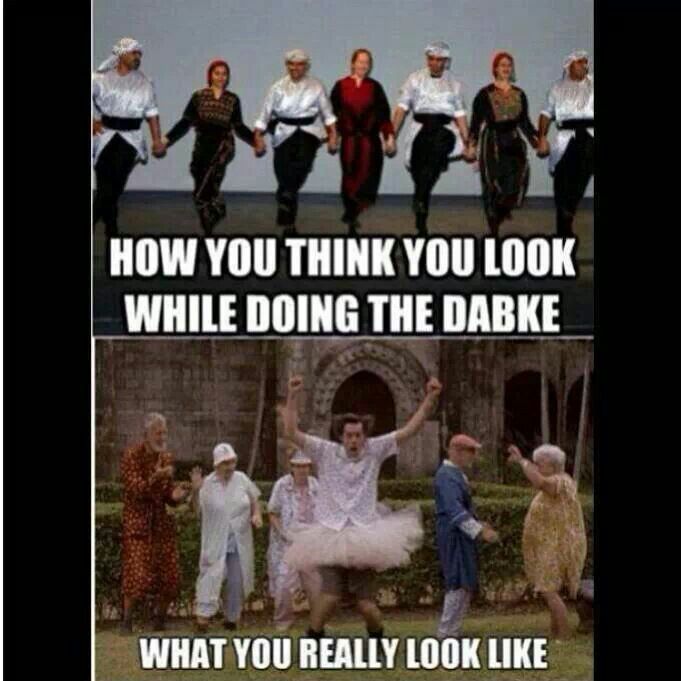 The dabke leader is supposed to be like a tree, with one arm in the air, a proud and upright trunk, and feet that stomp the ground in rhythm. At weddings, the singer begins with a mawwal. The raas or lawweeh takes the lead. Everyone does a basic 1-2-3 step before the song kicks in. At weddings, the dance is sometimes performed by a professional troupe dressed in costume.
The dabke leader is supposed to be like a tree, with one arm in the air, a proud and upright trunk, and feet that stomp the ground in rhythm. At weddings, the singer begins with a mawwal. The raas or lawweeh takes the lead. Everyone does a basic 1-2-3 step before the song kicks in. At weddings, the dance is sometimes performed by a professional troupe dressed in costume.
Song Genres There are numerous kinds of songs that are sung during and specifically for dabke, by both men and women respectively, depending on the occasion, song, and audience. Some of the most popular of these songs, such as Dal Ouna (دلعونا), Al Jafra (الجفرا), Al Dahiyya (الدحية), and Zareef il-Tool (ظريف الطول), are actually entire genres in themselves, in the sense that lyrics can vary significantly in each performance but the basic rhythm of the music is consistent and recognizable. This variation can be seen in the hundreds of lyrical variations heard and recorded of these songs which regardless of specific lyrics, are recognized by their rhythm and at times, a single phrase, as in Ala Dal Ouna, Jafra, and others. For example, even though one might have heard Ala Dal Ouna sung previously telling a different story in this famous love song, people will still call another song ascribing to the same rhythm and theme as Dal Ouna.
For example, even though one might have heard Ala Dal Ouna sung previously telling a different story in this famous love song, people will still call another song ascribing to the same rhythm and theme as Dal Ouna.
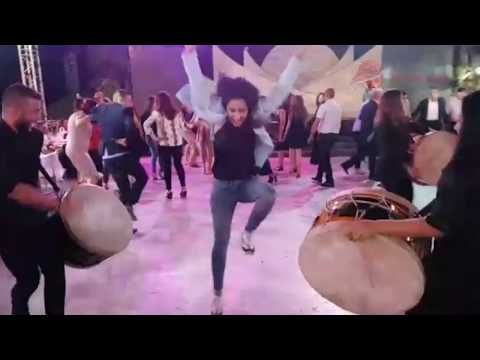 This recording is not the actual wedding, but a so called “Sahra”, which take places the night before. https://www.youtube.com/watch?v=PTfgwxIzC_4Simple wedding dabke‘s are harder to find. https://www.youtube.com/watch?v=JnBszWEQiO0
This recording is not the actual wedding, but a so called “Sahra”, which take places the night before. https://www.youtube.com/watch?v=PTfgwxIzC_4Simple wedding dabke‘s are harder to find. https://www.youtube.com/watch?v=JnBszWEQiO0Wikipedia says there are about 20 different types of Dabke, of which six are main types. I tried Googling each type, and found only a couple of YouTubes with these labels.
- Al-Shamaliyya (الشمالية): is probably the most famous type of dabke. It consists of a lawweeh (لويح) at the head of a group of men holding hands and formed in a semicircle. The lawweeh is expected to be particularly skilled in accuracy, ability to improvise, and quickness (generally light on his feet).
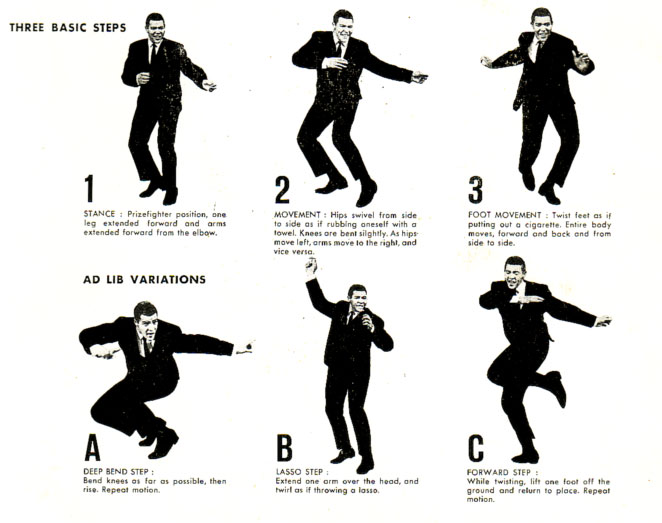 Typically, the dabke begins with a musician playing a solo on the mijwiz or yarghoul of a Dal Ouna piece, often with two singers accompanying his music. The dancers develop a synchronized movement and step and when the singers finish their song, the lawweeh breaks from the semicircle to dance on his own. When the leader of the dabke sees that the men’s steps are one, in sync, he instructs the dancers to slow down and begin a movement crossing their right foot in front of the opposite one (their left foot). The lawweeh continues to inform the dancers of their basic rhythms, and at this point other guests at the wedding or event occurring will join in the dabke line. This is the most popular and familiar form of dabke danced for happy family celebrations, such as weddings, circumcisions, the return of travelers, release of prisoners, and also for national holidays, in which dabke becomes a demonstration of national personality.[10]
Typically, the dabke begins with a musician playing a solo on the mijwiz or yarghoul of a Dal Ouna piece, often with two singers accompanying his music. The dancers develop a synchronized movement and step and when the singers finish their song, the lawweeh breaks from the semicircle to dance on his own. When the leader of the dabke sees that the men’s steps are one, in sync, he instructs the dancers to slow down and begin a movement crossing their right foot in front of the opposite one (their left foot). The lawweeh continues to inform the dancers of their basic rhythms, and at this point other guests at the wedding or event occurring will join in the dabke line. This is the most popular and familiar form of dabke danced for happy family celebrations, such as weddings, circumcisions, the return of travelers, release of prisoners, and also for national holidays, in which dabke becomes a demonstration of national personality.[10] - Al-Sha’rawiyya (الشعراوية): is limited to men and is characterized by strong steps or stomps.
 The lawweeh is the most important element in this type of dabke.[10]
The lawweeh is the most important element in this type of dabke.[10] - Al-Karaadiyya (الكرادية): is characterized by a lack of a lawweeh and slow movement with an azif (عازف) (flute player) in the middle of the circle.[10]
- Al-Farah (الفره): is one of the most active types of dabke and therefore requires a high degree of physical fitness.[10]
- Al-Ghazal (الغزل): is characterized by three strong stomps of the right foot, and is usually tiring for those dancing.[10]
- Al-Sahja (السحجة): is a popular Palestinian and Jordanian dance which became significantly more popular during the British Mandate for Palestine. Al-Sahja belongs mostly to northern and central Palestine, and in the south has two kinds: As-Samir (السامر) and Al-Dahiyya (الدحية). As-Samir’s form involves 2 rows of men on opposite walls, competing with folk poetry, sometimes improvised and even exchanging insults, competing in cleverness of retorts.
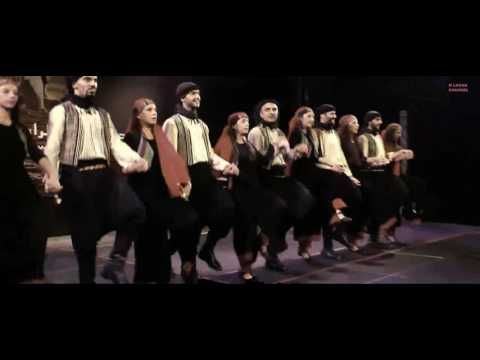 Al-Dahiyya is a Bedouin version of the same kind in which there is a professional dancer that dances between the two opposing walls of men who are competing for her attention, and at times give her money. Al-Sahja usually occurs the night before the wedding party of the groom (zafat al-‘arees), with most of the men in the village participating, especially those who will be attending or are directly involved in the other wedding festivities.”
Al-Dahiyya is a Bedouin version of the same kind in which there is a professional dancer that dances between the two opposing walls of men who are competing for her attention, and at times give her money. Al-Sahja usually occurs the night before the wedding party of the groom (zafat al-‘arees), with most of the men in the village participating, especially those who will be attending or are directly involved in the other wedding festivities.”
Lately the dabke has become more of a performance dance where a group of friends practice constantly until they can do complex steps in unison, then perform at weddings and celebrations. Most of the dabke YouTubes seen today are of this type – people want to see the most spectacular moves.
A sampler of current masters https://www. youtube.com/watch?v=_OeI00gA5ugAnother (rival) master Tamer Akil https://www.youtube.com/watch?v=-KOSWfExFAUGirls are dancing debka, too! https://www.youtube.com/watch?v=ywr-Ez2BJyIhttps://www.
youtube.com/watch?v=_OeI00gA5ugAnother (rival) master Tamer Akil https://www.youtube.com/watch?v=-KOSWfExFAUGirls are dancing debka, too! https://www.youtube.com/watch?v=ywr-Ez2BJyIhttps://www. youtube.com/watch?v=G5KfvP4qXa0Canada is home to much dabke https://www.youtube.com/watch?v=tZcuhZa0rns
youtube.com/watch?v=G5KfvP4qXa0Canada is home to much dabke https://www.youtube.com/watch?v=tZcuhZa0rnsHow to Dabke –
Al-Shamaliyya type?The Wikipedia description (above) of Al-Shamaliyya (الشمالية) fits what is by far the most prevalent type of dabke found on YouTube, so I’m assuming that when Levanitne YouTubes teach dabke, they’re teaching Al-Shamaliyya. It’s also possible that only scholars refer to types of dabke.
Basic Lebanese steps https://www. youtube.com/watch?v=K1XbND-e-9QSome simple Palestinian line moves https://www.youtube.com/watch?v=KWWHGdgjEbEPalestinian basic, saba, mijwez moves. https://www.youtube.com/watch?v=Xeo3DHnsdxc&t=206sSome fancy Palestinian in-line steps.
youtube.com/watch?v=K1XbND-e-9QSome simple Palestinian line moves https://www.youtube.com/watch?v=KWWHGdgjEbEPalestinian basic, saba, mijwez moves. https://www.youtube.com/watch?v=Xeo3DHnsdxc&t=206sSome fancy Palestinian in-line steps. Index is below. https://www.youtube.com/watch?v=JJIx5Nbw8e4
Index is below. https://www.youtube.com/watch?v=JJIx5Nbw8e4Leader (
lawweeh) moves Some simple Lebanese leader’s steps. https://www.youtube.com/watch?v=AkukpzPHTnQ More lawweeh moves. https://www.youtube.com/watch?v=pCYl-S5qR0gShayyel series
Here’s an entertaining series, each YouTube teaches a different step.
Be sure to turn on the subtitles by clicking on the red line under the CC ikon.
2. Kalashnikov https://www.youtube.com/watch?v=y0731ThYWJQ
3. Al Shamali https://www.
 youtube.com/watch?v=g6JjJ9hQDyY 4. With Rhythm https://www.youtube.com/watch?v=5eHmY6fT6dc 5. The Deer https://www.youtube.com/watch?v=QwUEUElaRQU6.
youtube.com/watch?v=g6JjJ9hQDyY 4. With Rhythm https://www.youtube.com/watch?v=5eHmY6fT6dc 5. The Deer https://www.youtube.com/watch?v=QwUEUElaRQU6.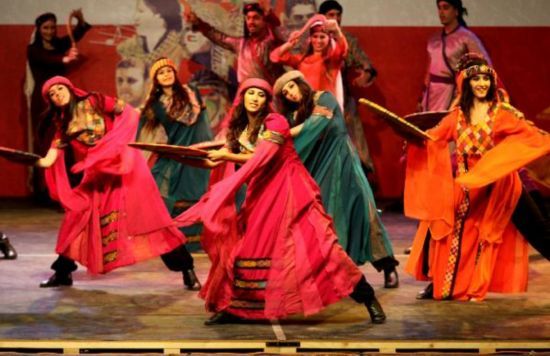 One and a half https://www.youtube.com/watch?v=MMKoaTEcGNM7. Palestinian wedding https://www.youtube.com/watch?v=KYgUChUNItg8. Dazi https://www.youtube.com/watch?v=D-br8oAqKmI9.
One and a half https://www.youtube.com/watch?v=MMKoaTEcGNM7. Palestinian wedding https://www.youtube.com/watch?v=KYgUChUNItg8. Dazi https://www.youtube.com/watch?v=D-br8oAqKmI9. The five https://www.youtube.com/watch?v=6WoD6DxPALg10. The Scissors https://www.youtube.com/watch?v=-BQoJDGX3z4
The five https://www.youtube.com/watch?v=6WoD6DxPALg10. The Scissors https://www.youtube.com/watch?v=-BQoJDGX3z4Like this:
Like Loading...
Dabke Dance: History, Types, Technique, Costumes & More
In many Arabic-speaking countries, whenever there is a joyous occasion like a marriage or a festival, you will definitely spot at least one group performing dabke. The dabke dance (also called dabka) is a folk dance originating from the Levantine regions, like Palestine, Jordan, Lebanon, and Syria.
If you’re seeking a deeper view into Arabic/Levantine culture, dabke is one of the best topics to investigate. Having been around and regularly performed for hundreds of years, the dance is a cultural jewel of the region and the people.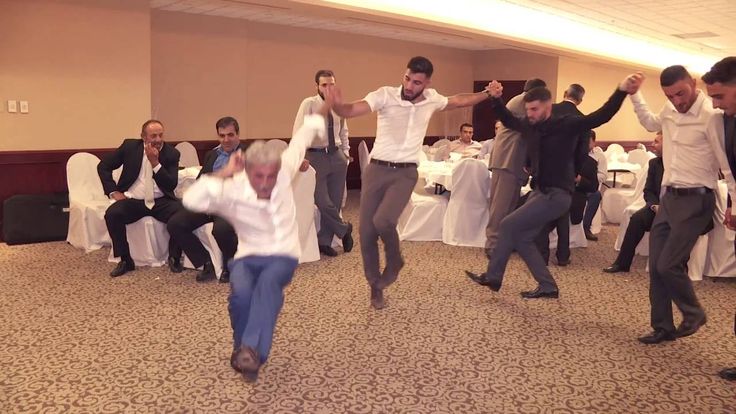
This article has everything that you need to know about dabke!
Contents
- What Is Dabke Dance?
- Dabke Dance Origin
- Types of Dabke
- Major Dabke Variations
- Minor Dabke Variations
- Dabke in Palestinian Culture
- Dabke Dance Techniques
- Dabke Dance Costumes
- Famous Dabke Dancers
- Zvi Gotheiner
- Bassam Abou Diab
- Barak Marshall
- Dabke Dance Music
- Songs
- Instruments
- Dabke Dance Competitions
- World’s Most Impressive Dabke Performances
- Movie About Dabke Dance
- Dabke Dance Gallery
- Final Words
What Is Dabke Dance?
The name “Dabke” is thought to have been derived from the Levantine Arabic word dabaka (دبكة), which can be roughly translated to “stamping of the feet”. It perfectly describes the essence of the dance.
Dabke is characterized by people stamping their feet rhythmically in lines or circles. The dancers’ arms will often be interlocked with one another. They will usually sing or chant along with the dabke music in the background, too.
The dancers’ arms will often be interlocked with one another. They will usually sing or chant along with the dabke music in the background, too.
The formation of dancers will form from left to right. At the head of the formation is the leader (called raas or lawweeh), who sets the rhythm and the steps for the rest. The lawweeh mustn’t just be an expert at dabke, but he must also be accurate, quick, and capable of improvisations. The leader will continuously alternate between facing the dancers and the audience.
Dabke is an incredibly joyous and energetic kind of communal dance. Like we mentioned at the beginning of the article, dabke is only ever performed on happy occasions. It is a very popular type of wedding dance in Palestine, for example.Source: Viavii.com
Dabke Dance Origin
Like many folk dances around the world, not much is known about the history of dabke.
Some historians said that the feet-stamping motion of dabke was derived from ancient fertility rituals of the Canaan civilization.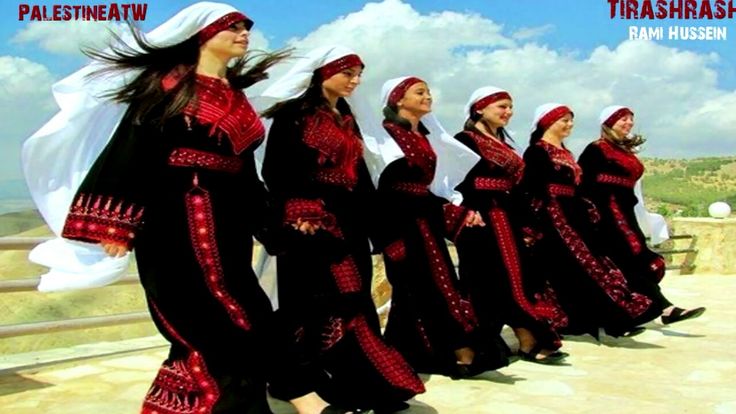 The Canaanite performed the same “jumps” in their rituals to chase away evil spirits and protect the crops from being harmed.
The Canaanite performed the same “jumps” in their rituals to chase away evil spirits and protect the crops from being harmed.
Other historians then theorized that dabke was a descendant of Phoenician dances dated thousands of years back.
There’s also a group of historians that think dabke evolved from the process of house-building in old Levantine areas. When people were still building mud houses, they needed to stomp the rooftops to keep the mud from cracking. Eventually, the stomping motion turned into dabke!
Most sources agreed that the dance form that’s later known as dabke appeared in the mountainous areas around the Mediterranean coastline and the Tigris river. Some of the earliest adopters of the dance were the people in villages in the Levant (Lebanon, Syria, Palestine, Jordan, Iraq) as well as certain Bedouin tribes in the regions.
Check more: Arab Dance: History, Popular Moves & More
Types of Dabke
Dabke is a very diverse dance with many variations. The people from one country or one area may have completely different interpretations of dabke. Dance historians have recorded over 20 different variations of dabke. However, we’re certain that there are more than just these 20 types.
The people from one country or one area may have completely different interpretations of dabke. Dance historians have recorded over 20 different variations of dabke. However, we’re certain that there are more than just these 20 types.
There are 6 popular variations. They are widely practiced and are best known.
Major Dabke Variations
1. Al-Shamaliyya (الشمالية)
Al-Shamaliyya is said to be the most common variation of dabke. The lawweeh dances at the front of the formation and sets the rhythm. Behind him will be both men and women dancing with their hands interlocked, formed into either a line or a circle.
Usually, a performance will start with the musician playing a solo on the mijwiz or yarghoul (traditional instruments). Accompanying the music will be one or two singers. On top of the music, the whole group of dancers will dance in synchronized steps to the beat, led by the lawweeh.
After the singers have finished their song, the lawweeh will break from the formation and dance solo.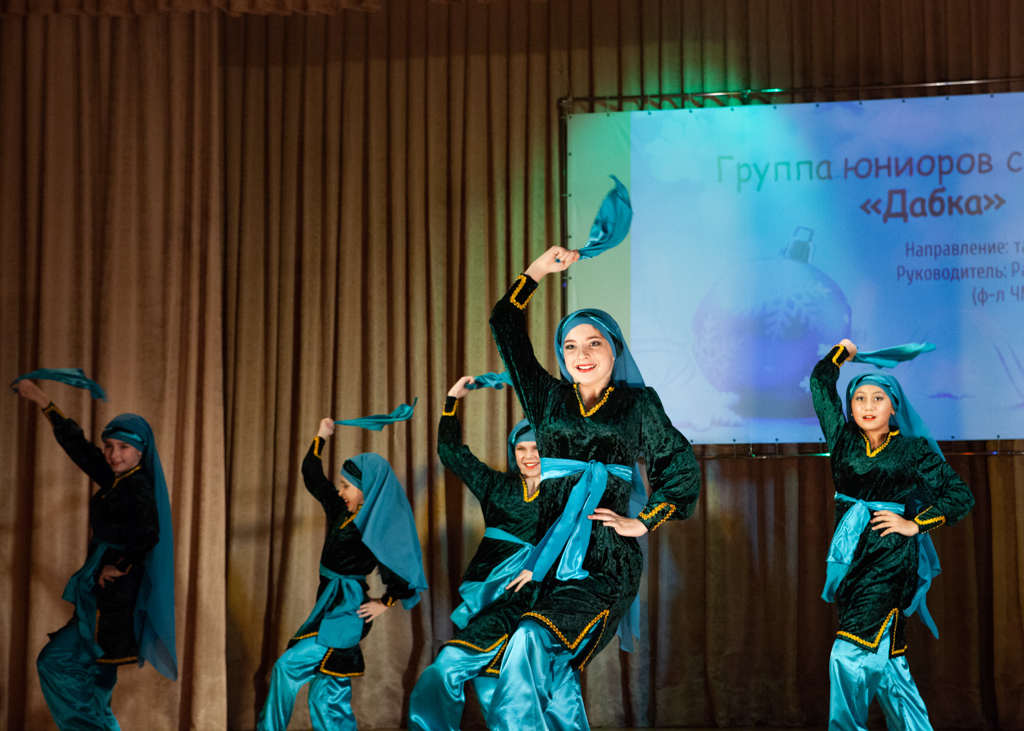 He will watch the steps of the dancers in the formation. When they’re in sync and on beat, he will instruct them to slow down and execute a crossing movement (put the right foot in front of the left foot).
He will watch the steps of the dancers in the formation. When they’re in sync and on beat, he will instruct them to slow down and execute a crossing movement (put the right foot in front of the left foot).
The lawweeh will continue to lead and regulate all of the dancers’ rhythm after the crossing. At this point, other guests or bystanders may also join the dabke group, too.
Like most forms of dabke, Al-Shamaliyya is strictly danced in happy, joyous, or celebratory settings, such as marriages, birthdays, festivals, and holidays.
2. Al-Sha’rawiyya (الشعراوية)
While Al-Shamaliyya is a communal dance that is for everyone regardless of sexes, Al-Sha’rawiyya is a men-only dance. This variation feels militant, almost like a martial dance and is characterized by strong steps and stomps.
The lawweeh continues to play an important role in this type of dabke. He is the one to set out the rhythm, pacing, and the moves for everyone else.
3. Al-Karaadiyya (الكرادية)
Slower and more relaxed, Al-Karaadiyya doesn’t require a lawweeh. Since the tempo is easier to follow, people can follow one another without the guidance of a lead dancer.
Since the tempo is easier to follow, people can follow one another without the guidance of a lead dancer.
Beside slower movements, Al-Karaadiyya also stands out by having an azif (عازف) – basically a flute player – stands and plays in the middle of the dancing circle.
4. Al-Farah (الفره)
Al-Farah is the mirror opposite of Al-Karaadiyya. Instead of being slow and relaxed, Al-Farah is frantic and extremely energetic. Movements consist of big hops, leaps, and jumps around the stage.
Because of that, it is mostly a men-only dance. Anyone who wants to partake in Al-Farah also needs to have a certain level of physical fitness, too.
5. Al-Ghazal (الغزل)
Similar to Al-Farah, Al-Ghazal requires fitness from the dancers. It is characterized by three strong stomps on the right foot. After a while, the motion can get very tiring.
6. Al-Sahja (السحجة)
Al-Sahja is a Palestinian and Jordanian dance, but these days, it is a lot more popular in Palestine.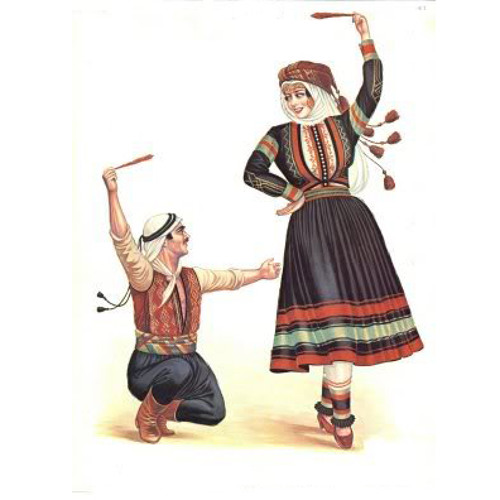 The dance grew in popularity after the British Mandate for Palestine. Al-Sahja is mostly danced in the northern and central areas of the region.
The dance grew in popularity after the British Mandate for Palestine. Al-Sahja is mostly danced in the northern and central areas of the region.
In the south of Palestine, Al-Sahja is separated into two types: As-Samir (السامر) and Al-Dahiyya (الدحية).
- As-Samir can look very entertaining if you’re able to watch in person. It consists of two rows of men standing against opposite walls. They will take turns competing with one another in folk poetry. Sometimes they will even invent clever insults and retorts (all in good fun, of course!)
- Al-Dahiyya is basically the same thing, but a female dancer will be performing in the middle of the two rows of men. The men will compete with one another for her attention and favor. Sometimes, they will even give her money.
You will often see Al-Sahja being performed the night before a wedding and is hosted for the groom. It is basically the Palestinian analog of a Western bachelor party. Most of the men in the village will attend the Al-Sahja, but attending is almost mandatory for the men who directly take part in the wedding or are close to the groom.
Most of the men in the village will attend the Al-Sahja, but attending is almost mandatory for the men who directly take part in the wedding or are close to the groom.
Minor Dabke Variations
Aside from the 6 major types above, there are dozens of minor dabke variations.
- Habel Mwadea’ (حبل مودع)
Habel Mwadea’ is the Jordanian interpretation of dabke. Similar to the Palestinian Al-Shamaliyya, it is danced by both men and women.
- Al-Tas’awiyya (التسعاوية)
If you want to watch a performance of Al-Tas’awiyya, you’ll need to visit Ma’an. The dance is mostly performed in this city in South Jordan.
Al-Tas’awiyya is also called Al-Ma’aniyya (المعانية).
- Al-Darrazi (الدرازي)
In Al-Darrazi, the music is produced by a Mijwiz, a traditional Middle Eastern musical instrument. The dance is very popular in both Jordan and Palestine.
- Al-’Askariyya (العسكرية)
Al-’Askariyya is a type of martial dance. In Arabic, the name is basically “military dabke”. In Arabic countries, women rarely participate in this type of dance because it requires a lot of energy.
In Arabic, the name is basically “military dabke”. In Arabic countries, women rarely participate in this type of dance because it requires a lot of energy.
- Al-Joufiyya (الجوفية)
Al-Joufiyya is quite similar to Al-Sahja in form. Two groups will stand facing one another, singing in a call-and-response fashion. One group will start the song, then the other one will respond accordingly with Jordanian folkloric songs.
- Al-Ghawarneh (الغوارنة)
Al-Ghawarneh is one of the fastest dabke variations out there. It is mostly performed in the Jordan Valley area.
It’s also known as Deir ’Ala (دير علا).
- Wahad w Nos (واحد ونص)
The name Wahad w Nos basically means “one and a half”. It is usually performed by a group of ten or more dancers, called a dbeka.
The dance will first start with the entire ensemble dancing in place with a simple hopping movement. Then, one of the dancers will separate from the dbeka and dance solo, striking out with his left foot, then his right foot.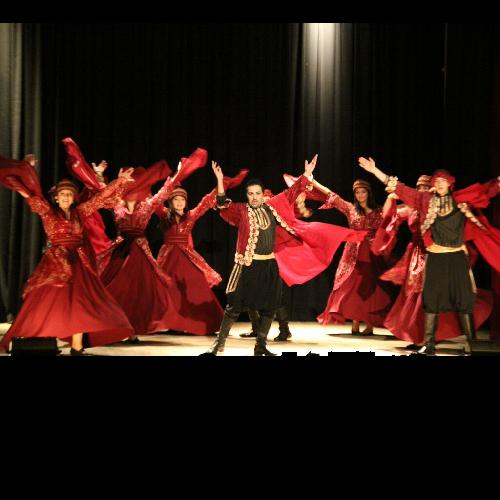
- Abu ’Alanda (أبو علنده)
Abu ’Alanda is characterized by the dbeka jumping five light jumps. After that, they will shift to the left, then to the right, and perform one and a half movements. Repeat.
- Al-Aqabawiyya (العقباوية)
So-called because it is mostly performed in the coastal city of Aqaba, South Jordan. It is the most popular local dance in the area.
- Al-Ramthawiyya (الرمثاوية)
This dance is performed in the far north of Jordan in the city of Ar-Ramtha. Just like Al-Aqabawiyya, it is the most popular folk dance of the city.
- Al-Hashi (الحاشي)
Al-Hashi (also known as the Al-Hashi Sword Dance) is a dance that’s performed exclusively by women. The dancers will perform while wielding sticks or swords to the music based on several classical poems.
- Al-Farradiyya (الفرّادية)
Similar to Al-Hashi, this is a minor variation of dabke that’s performed exclusively by women.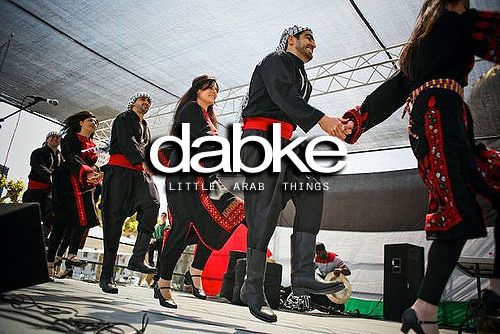
- Al-Jamma’iyya (الجمّاعية)
Al-Jamma’iyya is another kind of special dance for women only.
- Al-’Adiyya (العادية)
Also known as Al-Dalo’una (دبكة الدلعونا), this type of dabke can be danced in many different rhythms, slow and fast alike. The music is played by traditional instruments. It is popular in virtually all of the Levantine, from Palestine and Lebanon to Syria and Jordan.
Dabke in Palestinian Culture
While dabke is a dance that’s present in virtually all of the Levantine countries, Palestine stands out from the rest as the one country that truly embraces the dance. Palestinians more or less sewn it into the fabric of their culture. As a result, you will find many Palestinians performing Palestinian traditional dabke dance during national holidays as a way to express their national identity and pride.
Ever since the area became plagued by armed conflicts, dabke has undergone a period of revival. People see performing and practicing dabke as a way to preserve the Palestinian people’s customs, traditions, and ways of life.
People see performing and practicing dabke as a way to preserve the Palestinian people’s customs, traditions, and ways of life.
In Palestine, dabke is a nearly unskippable part of weddings. You can see performances to the north of Palestine, around the Hebron area. It’s also performed by people in the south of Marj Ibn Amer and Wadi Ara, as well as around the northern parts of the West Bank.
Three popular variations of dabke in Palestine are Al-Shamaliyya, Al-Sha’rawiyya, and Al-Karaadiyya.
For Palestinian women, there’s the Dabke Niswaniyyah, which is a women-only dance. Each type of dabke is danced to a unique set of songs. The theme usually revolves around love.
Dabke Dance Techniques
Dabke is a communal dance, which means it’s danced by everyone in a community. As such, the steps are very simple and easy to learn.
A basic dabke pattern is quite similar to a 6-count line dance. It has 6 steps and the dancers usually move to the right.
Ideally, if you want to practice, you should have two other friends with you. The dance should be started in a line, with your hands interlocked with your neighbors.
The dance should be started in a line, with your hands interlocked with your neighbors.
- Make a step to the right with your left foot. Swing your left foot over your right foot in a crossing motion. This is called a “cross-over” and it is the most basic step in dabke.
- Return to your starting position after the shift to the right.
- Repeat the rightward cross-overs again.
- Kick your left foot forward at a 45° angle relative to your right foot. Toes should be pointed upward, not sideward.
- As you kick your left foot up, transfer to a raise. Bend your left knee and bring your thigh up as high as possible. Preferably until your thigh is at a 90° angle to your right leg.
- Now, stomp hard on the ground. The stomping part is absolutely crucial to dabke. After all, the name of the dance is literally “stomping of the feet”.
Repeat all of the steps again. If you’re practicing, do it as fast as you can until you’re used to the pattern. If you’re performing, either follow the lead dancer (lawweeh) or the beat of the music.
If you’re practicing, do it as fast as you can until you’re used to the pattern. If you’re performing, either follow the lead dancer (lawweeh) or the beat of the music.
Sometimes, the chain of dabke dancers will reverse direction from right to left. This is totally normal. Just reverse your cross-overs. Instead of crossing with your left foot, do it with your right foot!
Note that this is the most basic dabke pattern. There are many variations that you can try after you’ve mastered the basic steps.
Dabke Dance Costumes
Once again, dabke is a communal dance. So, people usually aren’t very strict when it comes to apparel. You won’t be asked to wear dabke dance clothes.
If you’re invited to an Arabic wedding with a dabke performance, you can join the dance wearing whatever so long that it’s appropriate for the occasion and your clothing allows you to kick your legs.
However, in certain cases, dabke does have a dress code. In many countries, professional dabke dancers will wear the country or the area’s traditional costumes.
Men will usually wear loose trousers and shirts combination or a traditional thobe (a type of long robe). They may also wear a type of head covering like the keffiyeh, which is a kind of scarf.
Women may wear a black abaya robe that’s embroidered in golden threads in patterns of flowers and roses.
Famous Dabke Dancers
Zvi Gotheiner
While Zvi Gotheiner isn’t exactly a dancer, this Israeli choreographer is credited as the one who brought this Arabic dance to theaters and stages in the Western world. He integrated many dabke elements into his dance company’s repertoires (ZviDance) to great success and critical acclaim.
Gotheiner has received commissions from the Zurich Tanz Theater, the American Dance Festival, and many other notable places. He’s also honored with many awards, like two New York Foundation for the Arts Choreography fellowships and the National Arts Club Weiselberg Award.
Bassam Abou Diab
Being a Lebanese dancer, Bassam Abou Diab grew up with dabke. His focus lies in both contemporary dances as well as folkloric dances like dabke. As a result, Bassam has produced many beautiful performances with dabke elements.
His focus lies in both contemporary dances as well as folkloric dances like dabke. As a result, Bassam has produced many beautiful performances with dabke elements.
He has starred in many of Lebanese most beloved plays and shows and is currently a part of the Maqamat Dance Company.
Other than performing, Bassam is also a teacher. He regularly hosts many dance workshops in Lebanon. At these workshops, he teaches Lebanese dabke dances, contemporary dabke, as well as contemporary dance, rituals, and movements.
His workshops are available not just in Lebanon, but also in Spain, Lithuania, France, Italy, and Germany.
Barak Marshall
Source: https://kaufman.usc.edu/Similar to Zvi Gotheiner, Barak Marshall isn’t exactly a dancer. Rather, he’s a choreographer. Nonetheless, his contribution to the spread of dabke is worthy of note.
Barak Marshall is one of Israel’s best dance artists. He has once worked as the house choreographer for the famous Batsheva Dance Company.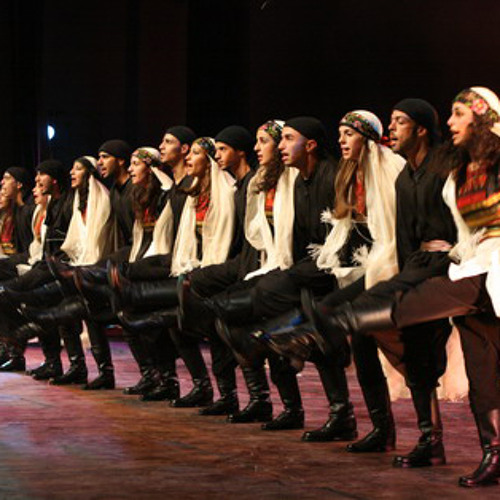 While most of his performances have to do with Israeli folk dances, he also integrated many Arabic elements into his choreographies. And of course, many of these elements were inspired by dabke.
While most of his performances have to do with Israeli folk dances, he also integrated many Arabic elements into his choreographies. And of course, many of these elements were inspired by dabke.
Dabke Dance Music
Dabke technically isn’t a picky type of dance. You can dance to any sort of music so long that it is rhythmic. The more energetic and fast the dance is, the faster the tempo of the music should be.
However, if you’re going to practice traditional dabke, it’s recommended that you pick suitable music. Depending on the variation, there may be a special set of music that you must dance to. For example, Al-Hashi.
Traditional dabke is danced to music produced by traditional instruments, ranging from hand drums to ouds. A dabke band may improvise their music, or re-play popular songs. Certain songs will even have lyrics and singers.
For modern dabke, the music can be produced by a blend of traditional instruments and modern instruments like electric guitars. As a matter of fact, some songs are entirely synthesized on a computer. Musics for contemporary dabke are instrumental for the most part. Very little singing is involved.
As a matter of fact, some songs are entirely synthesized on a computer. Musics for contemporary dabke are instrumental for the most part. Very little singing is involved.
Dabke can also be danced without any music at all! Just clap your hands to a rhythm.
Songs
Dabke songs also come in genres. For example, popular songs like Dal Ouna (دلعونا), Al Jafra (الجفرا), Al Dahiyya (الدحية), and Zareef il-Tool (ظريف الطول) are considered song genres by themselves. Basically, each one of these have a specific rhythm. Singers and musicians then pick the rhythm to build different songs with totally different lyrics.
Expert dabke dancers can tell you exactly the genre just by listening to the rhythm.
Instruments
Source: weddingwire.comA dabke band can use many instruments. Most popular is the oud, a type of lute and the mijwiz, which is similar to a reed clarinet.
In the percussion family is the tablah hand drum and the daff, which is similar to a tambourine.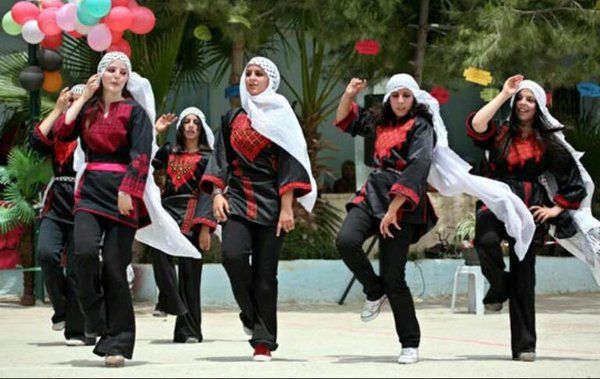
The arghul is and the Shubabeh, both of which are woodwind instruments.
Dabke Dance Competitions
Dabke is performed on a local, national, as well as international scale. Most of these competitions usually take place in the Arab World. For example, an international dabke competition was hosted in Lebanon in 2017.Source: https://www.ministryinfo.gov.lb/
There are many dabke competitions in western countries like the US and Canada, too.
World’s Most Impressive Dabke Performances
Using dabke, people have achieved many special world records. In 2011, a long human chain of 5,050 dancers was made in the village of Dhour El Choueir. It’s still the longest human chain in the world.
Movie About Dabke Dance
- Dabke Time (Short Documentary Film, 2017)
- Bosta (Musical Movie, 2005)
Dabke Dance Gallery
Source: https://awaheed.wordpress.com/Final Words
The dabke dance is a special part of the culture and the people of not just the Levantine countries, but also the Arab World as a whole.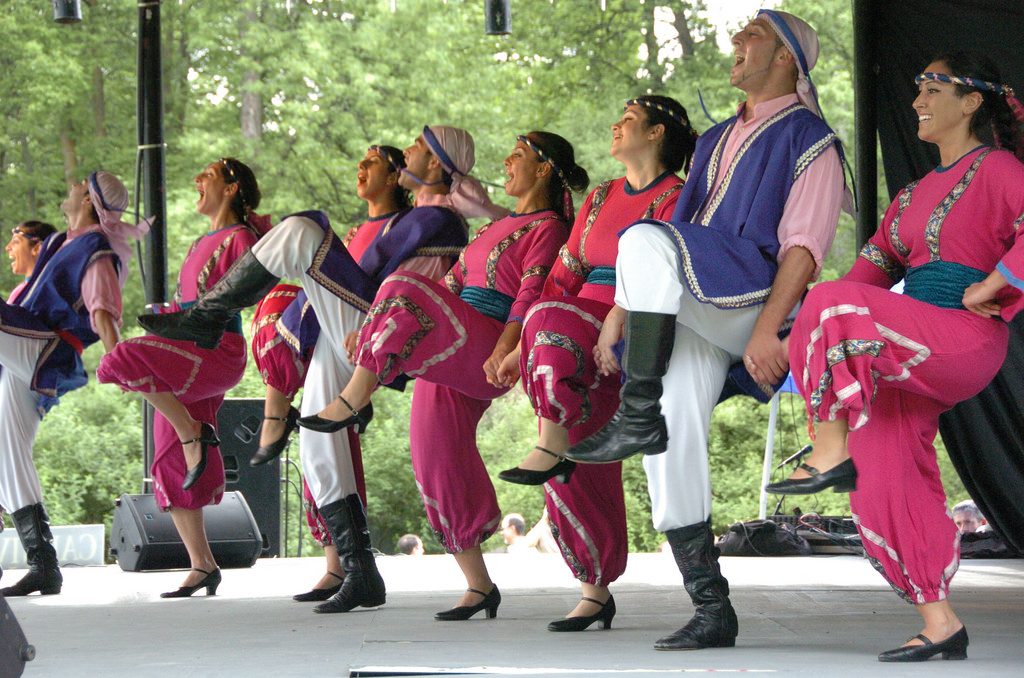 Viewing a performance is basically looking at thousands of years of history and evolution of the people here.
Viewing a performance is basically looking at thousands of years of history and evolution of the people here.
And since dabke is such a simple dance, why not get up from your spectator seats and try it for yourself?
Arabic dance Dabq
Traditional Arabic dance Dabq — dynamic, emotional, bright and free. It gives a sense of solidarity, uniting even strangers - often people, having heard their favorite tunes, drop their business and join the dancers. And how to dance dabka, in Lebanon , where it is especially popular, everyone knows from an early age - this dance conveys the spirit of strong friendship of the Lebanese people and charges with a good mood.
Dabka is rightly called the Arab step - the dance consists of fast and varied steps, jumps, kicks.
The pace and mood of the whole group is set by the leader - ras (from Arabic "head"), who quickly rotates beads like a rosary in his hand.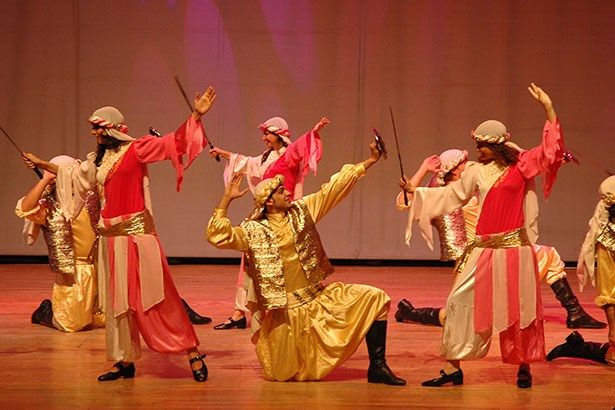 Instead of a rosary in his hands, there may be a handkerchief weighted with a special weight, a short thick cane, or even a saber. It is believed that his hands characterize the weapon, and with his feet he emphasizes his connection with the earth.
Instead of a rosary in his hands, there may be a handkerchief weighted with a special weight, a short thick cane, or even a saber. It is believed that his hands characterize the weapon, and with his feet he emphasizes his connection with the earth.
The leader is allowed to improvise, all the other dancers obey him - synchronously repeat energetic movements, keep a single rhythm and cheer each other up with fervent exclamations, lining up in a line of 20-30 people, which gives rise to a feeling of a single whole and an irresistible desire to merge with the dance. Dabka is so rhythmic and bright that it is hard to sit still while watching the dancers.
Dabka is considered a male dance, but can be performed by women as well as by a mixed group. Men dance widely and sharply, their jumps are long and high. Women have more modest movements, and some of them they do not do at all, giving men the right to solo.
The origin of dance.
The Dabka dance originated in Lebanon, and there are a lot of legends about its origin. According to one of them, the dance originated during the construction of houses, when men jointly trampled down thatched roofs. It is believed that in the same way, farmers trampled the earth to make it fertile. Another legend claims that when the Ottoman Empire invaded the territory of modern Lebanon, the inhabitants danced on the roads, breaking them and preventing the Turks from getting from city to city.
According to one of them, the dance originated during the construction of houses, when men jointly trampled down thatched roofs. It is believed that in the same way, farmers trampled the earth to make it fertile. Another legend claims that when the Ottoman Empire invaded the territory of modern Lebanon, the inhabitants danced on the roads, breaking them and preventing the Turks from getting from city to city.
There is a version that the origin of the dabka, which is also called the dance of solidarity, was influenced by Turkish culture. At the same time, Gypsy culture first influenced Turkish culture, and Turkish culture itself, in turn, influenced Arab culture. As proof, the same songs are cited by the Arabs and the Turks. Be that as it may, the dance enjoys great recognition in many Arab countries.
There is no single style of dabka, in each country and even city it has its own presentation, its own character. Syrians, Palestinians, Iranians brought their influence to Dabka, making the dance more diverse.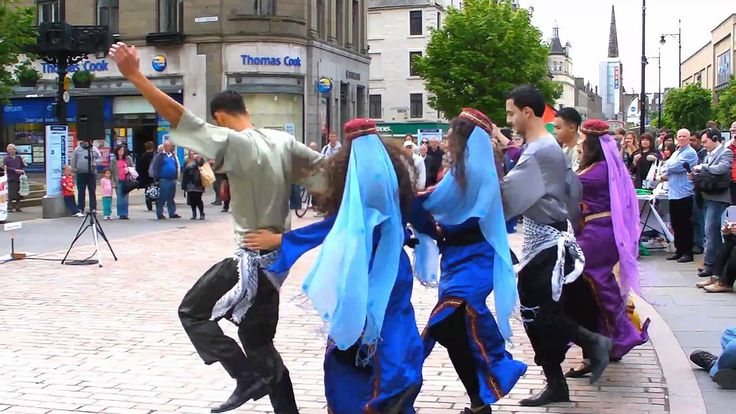
In Lebanon itself, there are several types of dabka - traditional , Baalbakiya , Badawiyya , Khaizrani (symbolizing the struggle) and others. All of them are very similar to each other and originated from songs with similar names, under which they are performed. During the holidays, the traditional dabka is preferred so that everyone can join the dance.
For the first time on stage, a dabka was performed as part of an international festival in Baalbek in 1960 , and this was preceded by a request from the Lebanese President Camille Chamoun to the famous Russian choreographer Igor Moiseev , so that he, having studied the steps of the dabka, would establish a classical basis for dance. So, thanks to the Russian choreographer, the dubka became popular. Subsequently, the dance was modernized by the Lebanese brothers-composers Assi and Mansour Rahbani .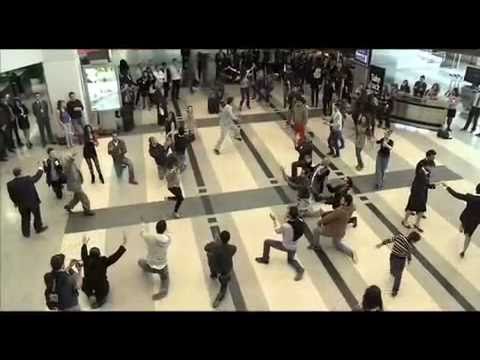
In 2007, a world record was set in Palestine - the longest dabka round dance out of three thousand people!
Music .
Dabka is a very temperamental and incendiary dance, which does not leave any spectator indifferent with its "hot" rhythms.
Music for dubka is groovy and fast with a four-quarter rhythm. This is a folklore rhythm often used in Lebanon, Syria and Iraq. Less often, a three-quarter rhythm can be found, which is explained by Turkish influence. The dance is accompanied not only by music, but also by a song with male vocals.
Dabka musicians play the darbuk (tabla), an ancient percussion instrument, a small goblet-shaped drum; rebabe - a one-string instrument, and the melody is played by a mizmar - a folk wind instrument.
According to one version, the dance could get its name from - darbuki ("darba" - from Arabic "hit"). The darbuka is the solo instrument in the dub, while the tablist who plays it also participates in the dance.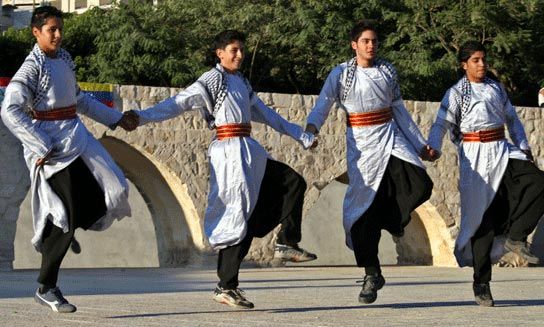
Traditional costume.
As a rule, the colors of clothes are matched to match the national flag of the country. In Lebanon it is red and green. Costumes are decorated with their own symbols, often crosses are embroidered on them - this is how the dancers show their religious affiliation.
Men dance in a plain shirt, waistcoat and wide trousers ( shiruel ), which are tucked into high boots. A red cap is put on the head - tarboush or a scarf is tied in a special way.
Women's costume is brighter, more complex and varied. This may be borrowing men's clothing; skirt, bloomers or long robe; a blouse with a vest or caftan of medium (or slightly lower) length; apron. Small handkerchiefs can be sewn on the sleeves, and a scarf is necessarily tied on the head. Women dance either in boots or in shoes with small heels. There is also a kind of belt.
Women dance either in boots or in shoes with small heels. There is also a kind of belt.
Nothing reflects the culture of the people like their dances, and the dabka lives in the very soul of the Lebanese. Even the modern youth of Beirut in jeans and sneakers familiar to everyone, holding hands to the thundering rhythm of the DJ, loves to perform their national dance at real dab-parties in nightclubs.
Text: Grishina Julia
Dabka. Oriental dance styles. Dabke. Music. Costume.
DABKA
Dabka ( Dabke ; from " dabke " - stomping feet) - dance style , performed on the Mediterranean coast. Dabka will be performed in Lebanon, Syria, Afghanistan, Turkey, Iraq, Kurdistan and other countries.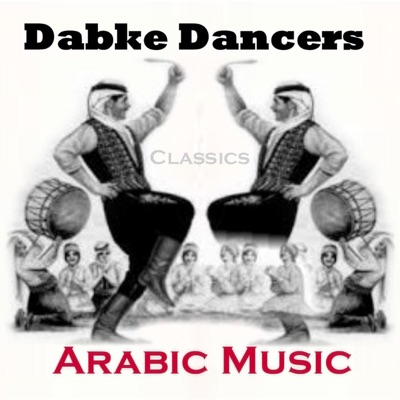 There are dances similar to dabka performed by the peoples of Greece, the Caucasus and the Balkan Peninsula. In Egypt, they also perform dabki , but as a show or a Bedouin version.
There are dances similar to dabka performed by the peoples of Greece, the Caucasus and the Balkan Peninsula. In Egypt, they also perform dabki , but as a show or a Bedouin version.
Traditionally, dabs were performed on holidays, as well as at the most important events of life: wedding, birth of children, seeing off to the war and meeting after it. Lebanese dabka is considered to be the most famous in the world. Let's talk about the Lebanese dabka .
Dabka is that kind of dance of the Arab world, which has several places of origin and is danced differently everywhere.
The basic dabka rhythms sound like "so-dum-dum-dum-so" or "so-dum-so-dum-so"
An old man appears with a darbuk in his hands, and several men with different flutes. music starts playing. Immediately, several men and women jump up, join hands, and begin to dance, the rest clap in time with the dancers. A woman with a pitcher on her head joins them, competing with them. Then men with swords appear, imitating a battle in a dance. Periodically, a dancer comes out of the line to the center to show how skillful he is in this dance . All of this is a celebration of the vine harvest season that continues in the Lebanese countryside to this day.
music starts playing. Immediately, several men and women jump up, join hands, and begin to dance, the rest clap in time with the dancers. A woman with a pitcher on her head joins them, competing with them. Then men with swords appear, imitating a battle in a dance. Periodically, a dancer comes out of the line to the center to show how skillful he is in this dance . All of this is a celebration of the vine harvest season that continues in the Lebanese countryside to this day.
There are several stories about the origin of dubka . The most common of them. Previously, the Lebanese covered the roofs of their houses with tree branches mixed with straw and mud. If all this is badly compacted, in winter, during the rainy season, cracks could form, and dirt began to flow into the house. The owner of the house called relatives and friends to help make the roof. They joined hands, formed a line and trampled all this mixture with their feet, walking along the roof.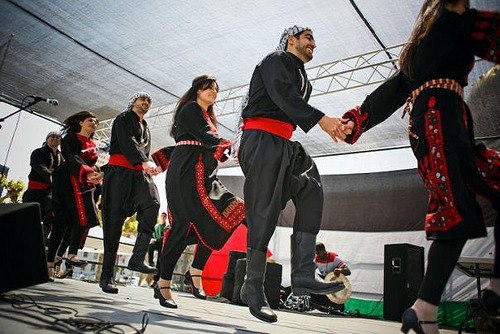 For more rhythmic movements, and in general, to make the process more fun, they introduced music and singing. Darbuka and mijuiz (flute) became the main instruments for dubs .
For more rhythmic movements, and in general, to make the process more fun, they introduced music and singing. Darbuka and mijuiz (flute) became the main instruments for dubs .
Another story of the origin of this dance tells that during the rule of the Ottoman Empire in the territory of Lebanon, the inhabitants, in protest, took to the roads and trampled them to destroy, thereby preventing the Turkish soldiers from reaching their shelters.
Another interesting story. Lebanese farmers jumped up and trampled the land to make it more fertile.
There are also several theories about the origin of dubs was influenced by Turkish culture, which in turn was influenced by Gypsy culture. As proof of this, they give an example of identical songs. Arabic "Ala Ain Moulayiteen", has a Turkish gypsy counterpart "Shashkin".
It is also a dance of solidarity and a way to express nationalism. The leader of the dabka should be like a tree. Proud, with hands in the air, characterizing weapons, and feet that trample the ground, thus emphasizing his connection with it. The meaning of dabq in Arabic is "stomping feet". Stomping, as well as jumping and kicking, are steps that characterize dubs in a unique way. The leader, who is called "ras", which means "head", is allowed to improvise at dance , and he or she also twirls a handkerchief or string of beads known as masbha (like a rosary) while the rest of the dancers keep the rhythm. The dance also uses vocals to show energy and punctuate the rhythm. Later, a tablist joined the dancers, a person who dances along with everyone, but at the same time also beats a big drum, called - tab.
The meaning of dabq in Arabic is "stomping feet". Stomping, as well as jumping and kicking, are steps that characterize dubs in a unique way. The leader, who is called "ras", which means "head", is allowed to improvise at dance , and he or she also twirls a handkerchief or string of beads known as masbha (like a rosary) while the rest of the dancers keep the rhythm. The dance also uses vocals to show energy and punctuate the rhythm. Later, a tablist joined the dancers, a person who dances along with everyone, but at the same time also beats a big drum, called - tab.
The most common styles of dabka in Lebanon are Badawiyye, Baalbakiyye, Houwara, Dalouna. All styles originated from songs with similar names, under which dubs . In addition, there is another old style called "Askarieh". In this style , quite difficult steps are performed, and not everyone could dance it. This style was performed in the mid-50s, in the areas - Besharre, Hermel, Akkar and Bekaa.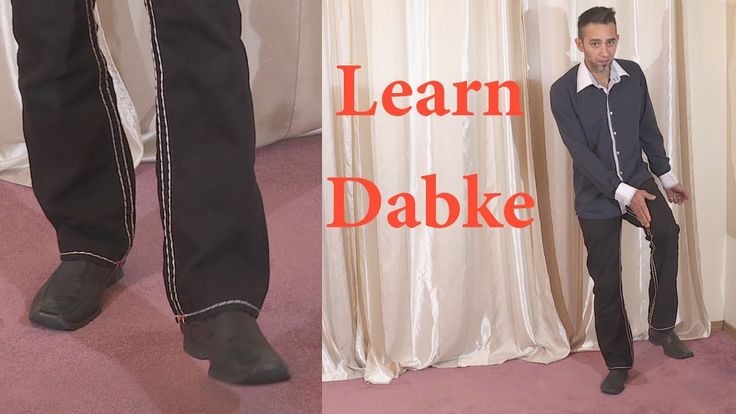 There is also a Hayzrani dub. This is a dance with sticks, symbolizing the struggle.
There is also a Hayzrani dub. This is a dance with sticks, symbolizing the struggle.
Dabka suits
Dabka suit has come down to us in its original form. The country's national colors are red and green. Men dance in wide trousers - shiruel, shirt and vest. A red cap is put on the head - a tarboush or a scarf. Costumes are decorated with their own symbols. Often, crosses are embroidered on the costume, thus showing their religious affiliation. Women's costume is quite diverse, unlike men's. It can be a skirt, and harem pants, and a long robe. Blouse and vest, or caftan of medium or below average length. A scarf that is tied around the head is probably the only obligatory attribute in a women's suit. Small handkerchiefs can also be sewn onto the sleeves. There is also a kind of belt, but each village has its own version suit . Men dance in boots, and women in shoes with small heels, which is better stamped.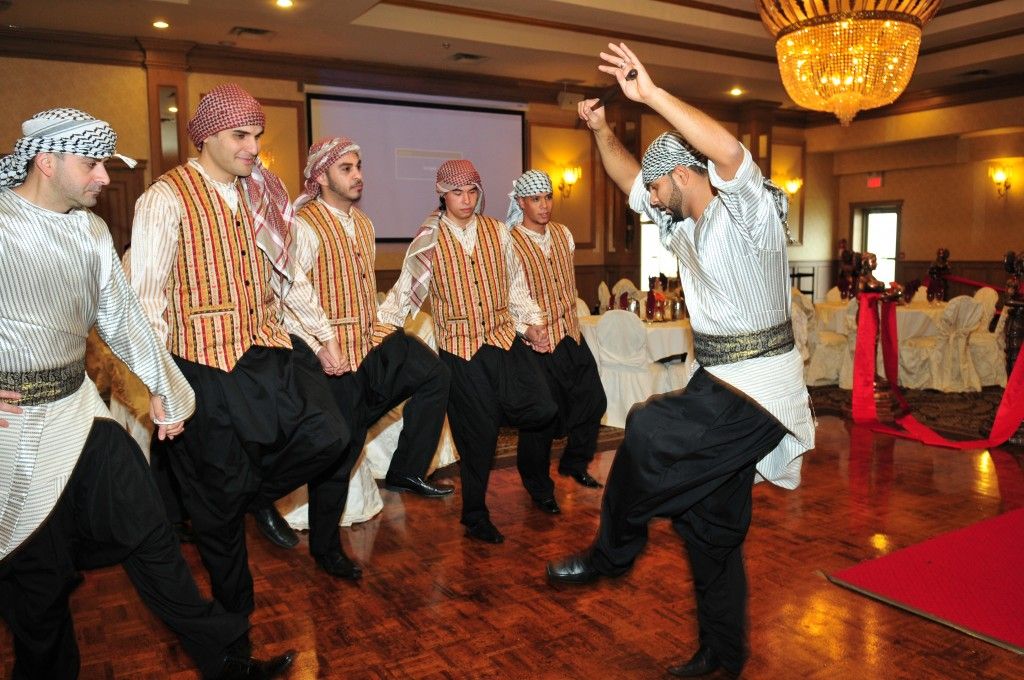
Men, unlike women, dance more sweepingly and sharply. Jumps are longer and higher. At a time when women are doing everything more tightly, squat and more modest. There are some movements that women do not do at all; at this time, they stand on the sidelines and dance when men solo with these movements.
Modern dub
Today, more or less a hybrid of all village variants is performed, which was formulated under the Rahbani brothers for festivals. Dabki are taught from infancy and are danced in every family, gathering for example around a table with Lebanese mazza (a variety of Lebanese snacks), araqam or wine. The dance has undergone changes and has become more lively and varied. Lebanese dabs can be performed separately by both men and women, and both together. It is danced both at weddings and other significant events, and for no reason, just when the mood is good. This dance lives within the Lebanese themselves.

